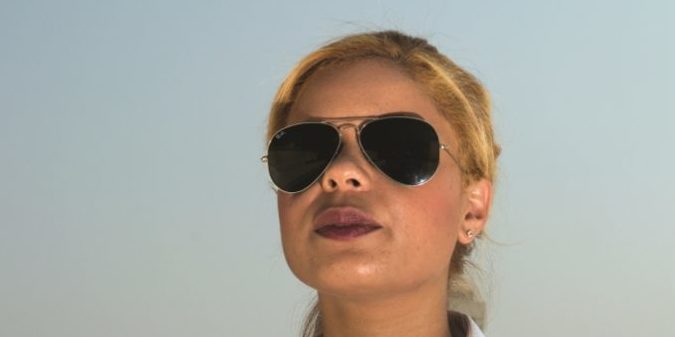Out of high school and straight to flying school, Nicole Swart seems to have figured out her aspirations at Concorde speed. She acquired her pilot’s license at the age of 19, when most girls are only just beginning to dream of high-flying careers.
Starting out as a receptionist in a cleaning company to save enough for her instructors’ course and clock up enough flying hours, Swart is today officially the first person on the continent to be awarded a license to fly drones – and she is only 23.
To the uninitiated, a drone is an aircraft without a pilot onboard. Its flight is controlled either autonomously by inbuilt computers or by remote control. Two weeks after remotely-piloted aircraft systems were integrated into the South African civil aviation airspace, Swart was handed the license.
Any comparisons with Star Wars and military drone strikes are quickly dispelled by her; it’s a world away from being mere instruments of war.

“Drones used to be for the military and transporting things, now they’re for crop-spraying. The more advanced the equipment, the more weight it can carry. I don’t foresee drones carrying passengers soon but maybe in about 50 years,” says Swart.
She holds the ‘highest’ pilot’s license – the airline transport pilot’s license. When she’s not flying planes or remotely-piloted aircraft, she is working as a testing standards officer, aviation personnel standards, at SACAA (South African Civil Aviation Authority).
“With flying, it is all about hours. I built up 1,500 hours which is enough for an airline transfer pilot license after I reached the threshold of instruction. I began with the Civil Aviation Authority and was placed in the Unmanned Aircraft department where we had to do research and help develop regulations,” she says.
Working with unmanned aircraft ignited a new passion; Swart went into training and saw an opportunity to learn about drones.
“I didn’t know about it before. They took off in 2007 – the military used it and now unmanned aircraft are in South Africa. It’s crazy,” she says.
A lot of the theoretical components were similar to manned aviation but from a technical point of view, it was an entirely different world.
“The flying side is very different from manned aviation. With an aircraft, you are physically inside it. If you turn right, it turns right. With drones, you have to imagine yourself in the aircraft. It isn’t as easy,” she says.
“This is where aviation is heading to – the future is in unmanned aircraft. You get different types, from 50 grams to seven tons – the range of drones is crazy. I flew a two kilogram remote controlled drone. Basically training is to understand the concept but my interest is in the complex ones where one uses data links and satellites and GPS points,” she says.
South Africa is one of a handful of countries around the world to have introduced comprehensive regulations to guide remote pilot operations.
“Being a third world country, no one expected us or anyone in Africa to be developing regulations. It is a huge deal – we are getting feedback from other countries. They want our advice on how to regulate their countries.”
For Swart, getting her drone license is just the beginning for breaking gender boundaries. She’s setting out to challenge the jokes about female pilots by flying right through the glass ceiling.
“People joke about gender but in the flying world you have to work harder and prove yourself. Once you enter the world you will do anything to be a part of it and work your way up. When I was a student there were 10 girls out of 300. When I left the school, there were 100 females,” she says.
Swart is only just embarking on her journey. She holds the first drone license on the continent and is on her way to becoming a commercial flight pilot, a flight instructor and examiner, but her first few flights have stuck with her.
“I didn’t think I would be ready for my first solo flight – I didn’t even know it was happening. They call the route a circuit. The instructor told me to stop – I thought I had done something wrong but he said ‘now you are flying by yourself’. It was the best feeling of my life. Every time you take off you get a rush and no two landings are the same. I have never experienced anything greater,” she says.
“Once I had a gear emergency, my gear wouldn’t come down which is quite a big deal as you need your wheels. I followed steps and all my training paid off and I had to handle the emergency and land safely.”
Needless to say, she made a safe landing – following protocol to a tee without breaking a sweat. The sky certainly isn’t the limit for this pilot.
